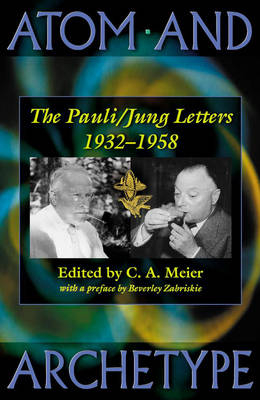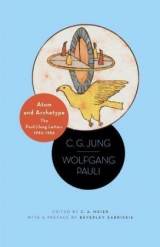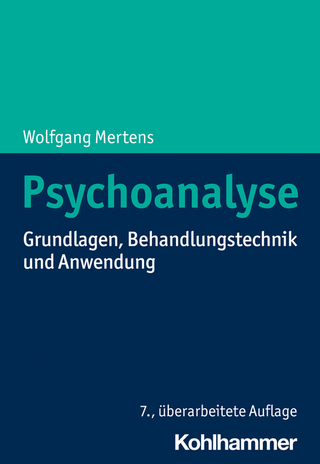
Atom and Archetype
Princeton University Press (Verlag)
978-0-691-01207-0 (ISBN)
- Titel erscheint in neuer Auflage
- Artikel merken
In 1932, Wolfgang Pauli was a world-renowned physicist and had already done the work that would win him the 1945 Nobel Prize. He was also in pain. His mother had poisoned herself after his father's involvement in an affair. Emerging from a brief marriage with a cabaret performer, Pauli drank heavily, quarreled frequently and sometimes publicly, and was disturbed by powerful dreams. He turned for help to C. G. Jung, setting a standing appointment for Mondays at noon. Thus bloomed an extraordinary intellectual conjunction not just between a physicist and a psychologist but between physics and psychology. Eighty letters, written over twenty-six years, record that friendship. This artful translation presents them in English for the first time. Though Jung never analyzed Pauli formally, he interpreted more than 400 of his dreams - work that bore fruit later in "Psychology and Alchemy" and "The Analysis of Dreams". As their acquaintance developed, Jung and Pauli exchanged views on the content of their work and the ideas of the day. They discussed the nature of dreams and their relation to reality, finding surprising common ground between depth psychology and quantum physics.
Their collaboration resulted in the combined publication of Jung's treatise on synchronicity and Pauli's essay on archetypal ideas influencing Kepler's writings in "The Interpretation of Nature and the Psyche". Over time, their correspondence shaped and reshaped their understanding of the principle they called synchronicity, a term Jung had suggested earlier. Through the association of these two pioneering thinkers, developments in physics profoundly influenced the evolution of Jungian psychology. And many of Jung's abiding themes shaped how Pauli - and, through him, other physicists - understood the physical world. Of clear appeal to historians of science and anyone investigating the life and work of Pauli or Jung, this portrait of an incredible friendship will also draw readers interested in human creativity as well as those who merely like to be present when great minds meet.
C. A. Meier practiced psychiatry in Switzerland from 1936 until his recent death. A cofounder and first president of the C. G. Jung Institute in Zurich, he held the Chair of Honorary Professor of Psychology at the Swiss Federal Technical Institute and cofounded the Clinic and Research Center for Jungian Psychology. His many books include Personality: The Individuation Process in the Light of C. G. Jung's Typology.
Lexicon of terms in Psychology and Physics xvii Jung and Pauli: A Meeting of Rare Minds, by Beverley Zabriskie xxvii Translators Note li Editorial Note, by James Donat lii Abbreviations liv Foreword, by C. A. Meier lvii The Correspondence 1 Appendixes 173 1: Pauli, Dream of 23 January 1938 175 2: Comments on Appendix 3 176 3: Unpublished Essay by Pauli 179 4: Two Letters from Puali to H. R. Schwyzer 197 5: Letter from Max Knoll to Pauli Concerning UFOs 200 6: Two Lectures by Pauli at the Psychological Club of Zurich 203 7: Paul's Observations on Cosmic Rays 210 8: Note by Jung on Synchronicity 211 9: Correspondence between Pauli and the C. G. Jung Institute 212 10: Articles on Party Violation from The New York Times, January 16, 1957 218 11: Facsimiles of the Handwriting of Pauli and Jung 226 12: The Letters Listed in Chronological Order 229 Bibliography 233 Index Rerum 241 Index of Terms 243
| Erscheint lt. Verlag | 10.6.2001 |
|---|---|
| Übersetzer | David Roscoe |
| Vorwort | Beverley Zabriskie |
| Zusatzinfo | 2 halftones |
| Verlagsort | New Jersey |
| Sprache | englisch |
| Maße | 152 x 235 mm |
| Gewicht | 595 g |
| Themenwelt | Literatur ► Briefe / Tagebücher |
| Geisteswissenschaften ► Psychologie ► Psychoanalyse / Tiefenpsychologie | |
| ISBN-10 | 0-691-01207-5 / 0691012075 |
| ISBN-13 | 978-0-691-01207-0 / 9780691012070 |
| Zustand | Neuware |
| Informationen gemäß Produktsicherheitsverordnung (GPSR) | |
| Haben Sie eine Frage zum Produkt? |
aus dem Bereich



